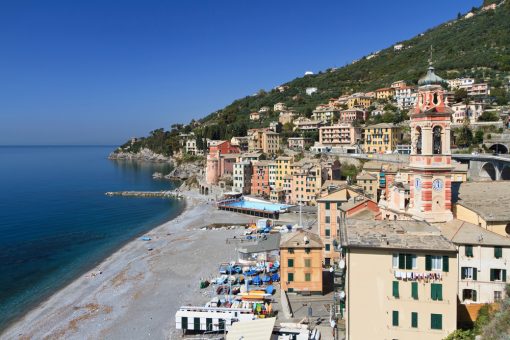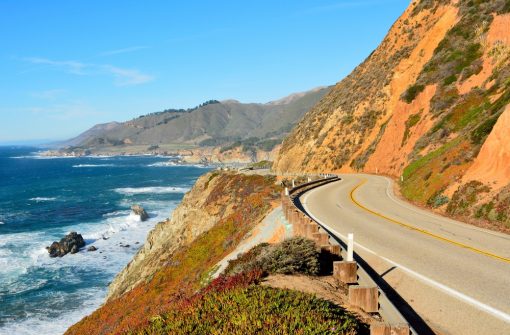Have you ever arrived at a famous landmark only to find yourself swimming in a sea of selfie sticks? Or paid triple the normal price for a hotel room just because you booked during peak season? If these travel frustrations sound familiar, it might be time to rethink when you take your vacation.

Traveling during off-season months—those periods when tourist numbers drop significantly in a destination—can transform your entire travel experience. From smaller crowds to bigger savings, the benefits extend far beyond what most travelers realize.
What Exactly Is Off-Season?
Off-season varies dramatically depending on where you’re going. In Europe, winter months (November through March) see fewer tourists, while tropical destinations like Thailand experience their low season during rainy months (typically May through October). Mountain ski resorts become quiet once the snow melts, and beach destinations cool down when temperatures drop.
The off-season isn’t the same everywhere:
- Mediterranean Europe: November to March
- Caribbean: June to November (hurricane season)
- Southeast Asia: May to October (monsoon season)
- Australia: June to August (their winter)
- Alaska: October to April
- New York City: January to February
Understanding when a destination’s off-season falls requires research, but the rewards make this homework worthwhile.
Your Money Goes Much Further
The most obvious benefit of off-season travel is the price difference. During my trip to Venice in February, I paid €75 per night for a canal-view room that would have cost €250 in July. That’s a 70% discount just for changing when I traveled.
The savings appear everywhere:
- Accommodations: Hotels and rentals slash prices by 30-60% to attract visitors during slow periods
- Flights: Airlines drop fares by up to 50% during shoulder and off-seasons
- Local tours: Many tour companies offer discounts of 20-40%
- Car rentals: Expect to pay 15-30% less than during peak times
A family of four traveling to Spain in October instead of August could save approximately $2,000-$3,000 on a 10-day trip. That’s money you could use for extra experiences, nicer accommodations, or simply save for your next adventure.
These savings let you either spend less overall or upgrade your experience without increasing your budget. The four-star hotel that was out of reach during high season might suddenly fit comfortably within your price range.
Crowds Disappear (Almost Like Magic)
Remember that iconic photo you wanted at the Trevi Fountain or Machu Picchu? During peak season, getting that perfect shot means elbowing through hundreds of other tourists or waking up at 5 AM.
Off-season travel transforms these experiences:
- Less time waiting: The average wait time at popular attractions drops from hours to minutes
- Better photos: Fewer people means cleaner shots of landmarks
- More authentic interactions: Locals have more time and patience when not overwhelmed by tourist hordes
- Easier reservations: Getting tables at popular restaurants becomes possible without booking months ahead
During a November trip to Barcelona, I walked straight into Sagrada Familia without a reservation—something unthinkable during summer months when tickets sell out weeks in advance.
Having space to breathe changes how you experience a place. You can linger longer at museums, take your time at viewpoints, and actually hear the natural sounds of a place rather than the chatter of fellow tourists.
Locals Are More Welcoming
When shopkeepers, tour guides, and restaurant owners aren’t burned out from endless waves of tourists, they often show a different side to visitors.
During peak season, locals in tourist-heavy destinations experience what psychologists call “tourism fatigue”—a state of frustration and annoyance with visitors. Off-season travelers avoid this phenomenon. Shop owners have time for conversations, waiters aren’t rushing you through meals, and local guides can customize experiences rather than running through rehearsed scripts.
In Prague during January, a café owner spent 30 minutes explaining the history of Czech coffee culture to me—something he admitted would never happen during the summer rush when his café serves five times more customers daily.
These authentic connections often lead to insider recommendations you won’t find in guidebooks or on travel websites. The restaurant without an English menu. The hidden viewpoint locals treasure. The neighborhood festival tourists rarely discover.
Weather Isn’t Always What You Expect
“But what about the bad weather?”
This is probably the biggest concern people have about off-season travel. While it’s true that many destinations have off-seasons that coincide with less-than-perfect weather, the reality is often far better than imagined.
Venice in winter offers misty, atmospheric canals without the summer stench. The Greek islands in October still provide swimming-worthy temperatures but with gentle breezes instead of the meltingly hot July sun. Paris in November has a moody charm with autumn leaves that many photographers prefer to spring blooms.
Sometimes off-season weather creates unique experiences:
- Seeing the Northern Lights in Iceland (only visible during darker winter months)
- Witnessing thunderstorms roll across tropical beaches
- Experiencing seasonal festivals and holidays
- Enjoying outdoor activities without heat exhaustion
Paris recorded 86°F (30°C) average temperatures in July 2023, making museum visits uncomfortable and outdoor cafés nearly unbearable by midday. Meanwhile, May and September visitors enjoyed pleasant 68-75°F (20-24°C) days—perfect for exploring.
Smart packing and flexibility in your itinerary can easily overcome most weather challenges. Having a mix of indoor and outdoor activities planned provides options when occasional rain or cold fronts move through.
You Experience More Authentic Culture
When peak tourist season ends, local life resumes its natural rhythm. This shift allows visitors to experience a destination as it exists for residents rather than the version packaged for tourists.
During high season, many cultural events become overcrowded or commercialized. Off-season travelers might stumble upon:
- Local food festivals celebrating seasonal harvests
- Religious or cultural celebrations rarely promoted to tourists
- Community events like town markets or regional sports competitions
- Artistic performances aimed at local audiences rather than tourists
In Seville during February, I witnessed neighborhood families gathering for pre-Lenten celebrations completely different from the commercialized Easter processions that draw international crowds. The food was more authentic, the atmosphere more relaxed, and not once did someone try to sell me overpriced souvenirs.
These cultural immersion opportunities give you stories and experiences that set your travels apart from standard tourist narratives.
How To Plan An Amazing Off-Season Trip
Taking advantage of off-season travel requires more planning than simply booking during peak months. Here’s how to ensure your experience delivers all the benefits without unpleasant surprises:
Research Opening Hours
Some attractions reduce their hours during off-season months or close certain sections for renovation. Museums might close one or two days per week instead of being open daily. Always check official websites for current schedules rather than relying on guidebooks or third-party sites.
For example, the Keukenhof Gardens in the Netherlands only open during spring tulip season (March-May). If viewing tulips is your main goal, visiting Amsterdam in January won’t work, no matter how cheap the flights are.
Consider Shoulder Season
If you’re nervous about fully committing to off-season travel, consider the “shoulder season”—those weeks just before or after peak season when you’ll find moderate crowds and prices with generally good weather.
Shoulder seasons typically offer:
- 20-30% lower prices than peak season
- Fewer crowds but still good weather
- Most attractions and businesses still operating on regular schedules
May and September make excellent shoulder months for many European destinations. You’ll avoid the July-August crowds while still enjoying long days and pleasant temperatures.
Pack Smart
Off-season often means dealing with more variable weather conditions. The key to comfort is layering and bringing versatile clothing options.
Essential packing tips include:
- Waterproof outer layers (jacket and shoes)
- Layers that can be added or removed as temperatures change
- One dressier outfit for nice restaurants (which might require reservations even in off-season)
- Portable umbrella that can fit in a day bag
For winter destinations, merino wool base layers provide warmth without bulk, while summer destinations in off-season might still require sun protection despite cooler temperatures.
Find The Hidden Gems
Every destination has weather-proof attractions that shine regardless of season. Research indoor options like:
- Local cooking classes
- Museums and art galleries
- Historic buildings and churches
- Food markets and covered shopping areas
- Thermal baths or indoor pools
These activities provide excellent backup plans for days when weather doesn’t cooperate with out
When Off-Season Might Not Work
Being honest about the limitations of off-season travel matters too. Sometimes peak season exists for good reasons:
- Wildlife viewing: If you’re hoping to see specific animal migrations or behaviors, these follow natural patterns that can’t be rescheduled
- Extreme weather destinations: Hurricane seasons, monsoons, or severe winter conditions might make some places genuinely unpleasant or unsafe
- Beach-focused vacations: If your primary goal is sunbathing and swimming, visiting during cold or rainy months defeats the purpose
- Specific festivals or events: If attending Carnival in Rio or the Cherry Blossom Festival in Japan is your main travel goal, you must visit during those specific times
The key is understanding your travel priorities. If swimming in warm ocean waters tops your list, paying premium prices for peak season might make sense. But if experiencing local culture and saving money rank higher, off-season travel delivers tremendous value.
Real Savings: By The Numbers
To understand just how significant off-season savings can be, consider these real examples from 2023-2024:
One week in Santorini, Greece
- July (peak): $3,200 (flights, mid-range hotel, meals)
- October (off-peak): $1,850 (same quality accommodation)
- Savings: $1,350 (42%)
Weekend in New York City
- December (holiday season): $1,450 (flights, hotel, activities)
- February (off-peak): $870 (same itinerary)
- Savings: $580 (40%)
10 days in Bali
- August (dry season): $2,600
- November (shoulder season): $1,800
- Savings: $800 (31%)
These savings represent real opportunities—extending your trip by several days, upgrading your accommodations, or simply reducing your overall travel expenses.
Making The Choice
Off-season travel isn’t about enduring bad experiences to save money. It’s about discovering different—often better—versions of popular destinations while gaining more control over your travel budget.
The emptier streets of Prague in winter reveal architectural details hidden by summer crowds. The misty mornings of Ireland’s off-season create magical landscapes photographers dream about. The quiet beaches of Thailand during green season offer peaceful retreats impossible to find when every sunbed holds a tourist.
Travel during these quieter months transforms from checking landmarks off a list to truly experiencing places. Without the pressure of crowds and premium prices, you gain freedom to change plans, linger in places that capture your interest, and connect with both locals and fellow off-season travelers who share your approach to exploration.
Your perfect vacation might be waiting in the months others overlook. All it takes is a willingness to think differently about when you travel.
Author bio: James Reeves is a writer, former logistics manager, and wilderness educator. He loves to travel, making memories and sharing experiences with his family, when he’s not busy working on his homestead. Find his writing on Muckrack and follow him on X.
You might also enjoy
The Travelers Way occasionally accepts guest posts from fellow travel bloggers, friends within the travel industry, and as advertorial content.







